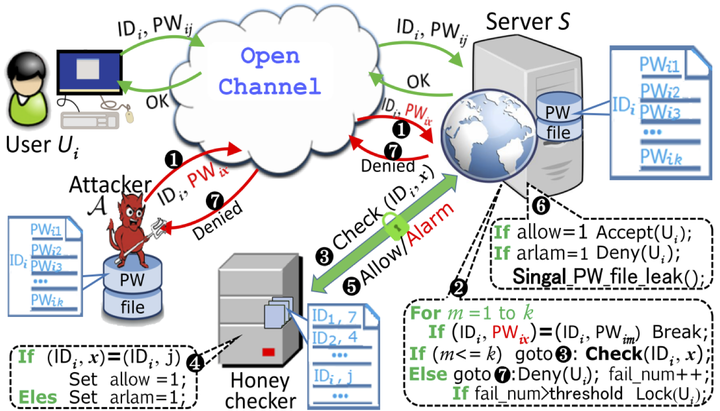 Honeyword mechanism.
Honeyword mechanism.
Abstract
Honeywords are decoy passwords associated with each user account, and they contribute a promising approach to detecting password leakage. This approach was first proposed by Juels and Rivest at CCS’13, and has been covered by hundreds of medias and also adopted in various research domains. The idea of honeywords looks deceptively simple, but it is a deep and sophisticated challenge to automatically generate honeywords that are hard to differentiate from real passwords. In JuelsRivest’s work, four main honeyword-generation methods are suggested but only justified by heuristic security arguments.
In this work, we for the first time develop a series of practical experiments using 10 large-scale datasets, a total of 104 million real-world passwords, to quantitatively evaluate the security that these four methods can provide. Our results reveal that they all fail to provide the expected security: real passwords can be distinguished with a success rate of 29.29%∼32.62% by our basic trawling-guessing attacker, but not the claimed 5%, with just one guess (when each user account is associated with 19 honeywords as recommended). This figure reaches 34.21%∼49.02% under the advanced trawling-guessing attackers who make use of various state-of-the-art probabilistic password models. We further evaluate the security of Juels-Rivest’s methods under a targeted-guessing attacker who can exploit the victim’ personal information, and the results are even more alarming: 56.81%∼67.98%. Overall, our work resolves three open problems in honeyword research, as defined by Juels and Rivest.